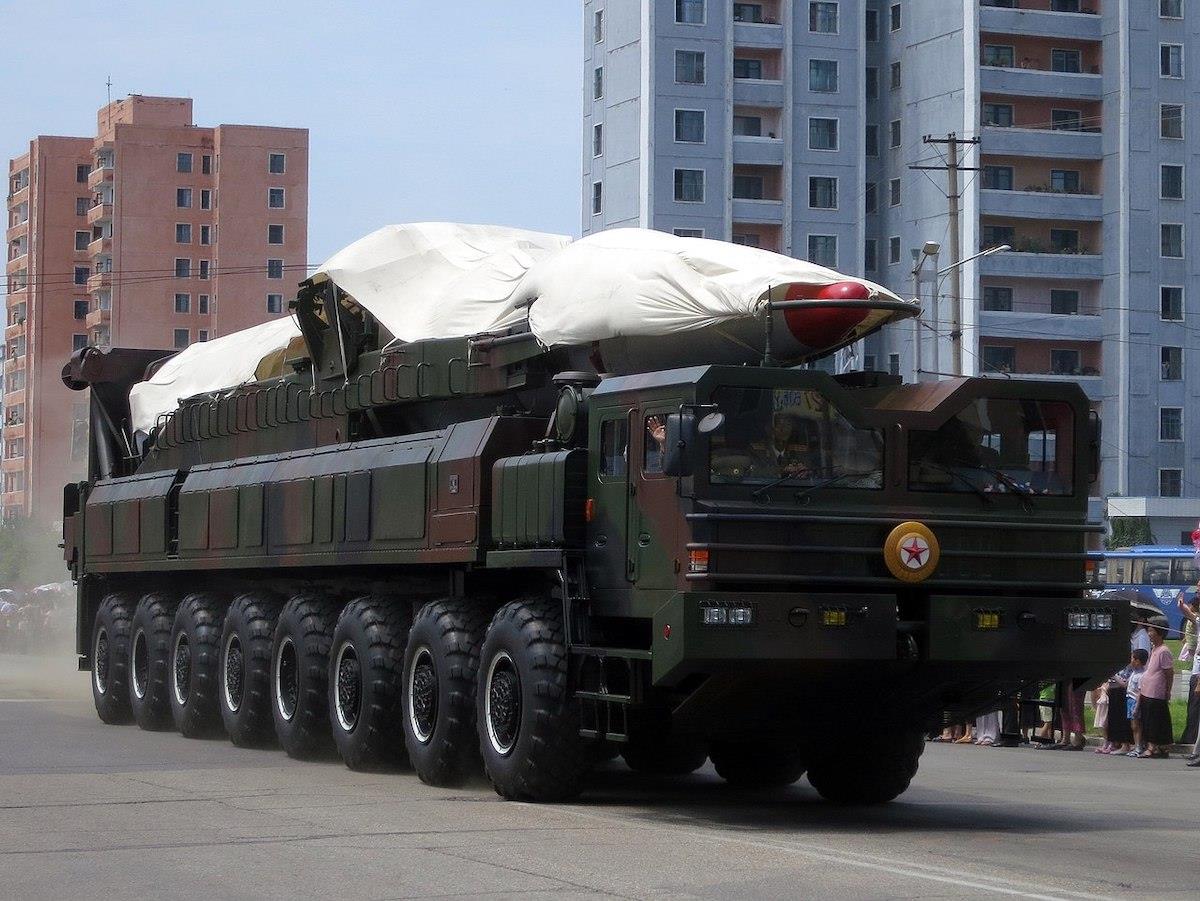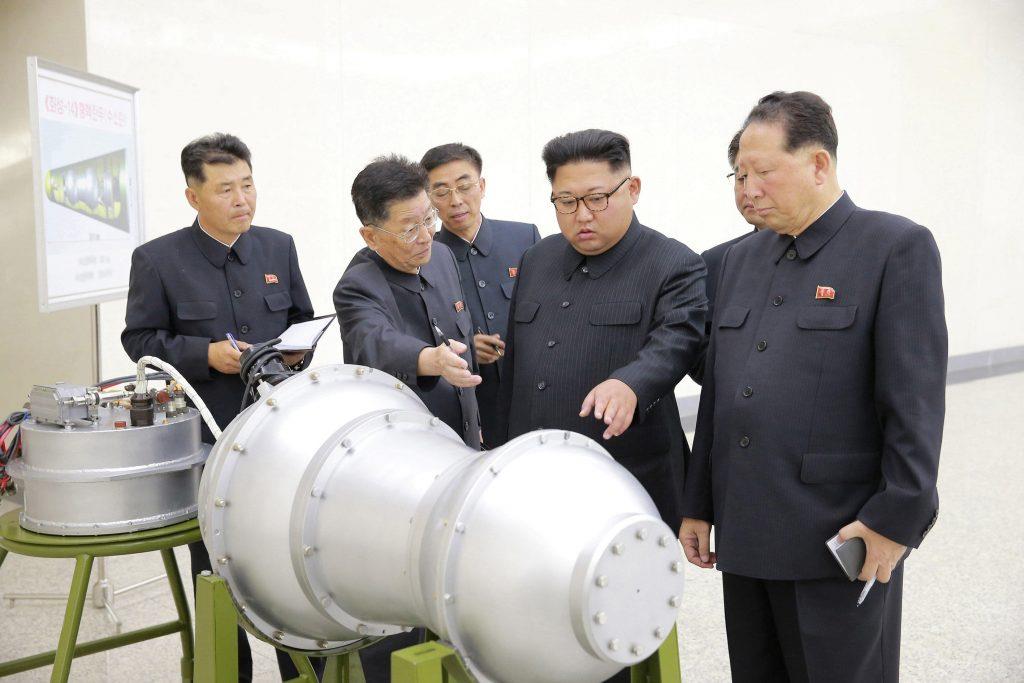(MENAFN- Asia Times)
SEOUL – In the jittery new, post-Ukraine invasion world, North Korea's Kim Jong Un has stated openly that his nuclear arsenal is no longer simply a deterrent.
Speaking at a late-night military parade on Monday night, he said his nuclear force“can never be confined to a single mission.”
Kim added, according to excerpts of his speech carried in state media:“If any forces try to violate the fundamental interests of our state, our nuclear force will have to decisively accomplish its unexpected mission.”
Colossal strategic ambiguity is baked into the phrase“the fundamental interests of our state.” But what is clear is that Kim's nuclear force has widened its previous doctrinal parameters.
Kim's candid announcement should not surprise North Korea watchers. It had been pre-signaled as early as 2021 and by a range of weapons tests this year.
The statement follows 13 tests of varied delivery systems this year. They include missile types appropriate for delivering nuclear warheads to battlefields, rather than the huge, and photogenic, intercontinental ballistic missiles that heft strategic nuclear warheads into the atmosphere.
North Korea's leader also made clear his intent to continue developing his nuclear arsenal – an intention widely repeated in headlines. But that is classic, often-repeated Kim-talk.
Conversely, Kim's statement on the expanded role of his nuclear force overturns years of conventional wisdom.

A North Korean ballistic missile. Photo: WikiCommons
Emerging offensive stance
Ever since 2006, when North Korea first tested a nuclear device, the broad understanding among analysts and observers has been that North Korea's nuclear arsenal exists to deter an Iraq- or Afghanistan-style attack by nuclear-armed US forces.
Some say the possession of nuclear arms also gives North Korea a stronger voice in its dealings with China. But the bottom line is that they underwrite the North Korean state and the Kim regime.
Of late, cracks have appeared in this long-held belief.
As previously reported in Asia Times , North Korea has been gradually shifting toward weapons of use, rather than weapons of non-use. And this year, it has likely taken note of Russian President Vladimir Putin's recent practice.
Putin has verbally ring-fenced his conventional invasion of Ukraine by threatening nuclear retaliation against any outside states which dare to intervene.
Could that strategy be replicated on the Korean Peninsula? That is unknown. But while Kim is talking a good game, it is not clear that he has the capabilities in place to put it into practice. At least, not yet.
Kim has not tested a nuclear device since 2017. And all devices tested so far have ignited the kind of kilotonnes required for city-shattering strategic weapons.
But at a 2021 Party Congress, Kim announced a vast new list of weapons, including tactical nuclear arms. Such weapons, with smaller yields, are designed for use on the battlefield, often not simply to destroy, but to deny an area to an enemy. It is known as“grid square removal.”
“We are talking a small nuclear weapon that is useful for military targets, missile bases, but also assembly areas, airfields and harbors,” Chun In-bum, a retired South Korean general, told Asia Times.
Ominously for South Korea's defense, US forces would require that kind of facility to reinforce the peninsula if hostilities broke out.
Now reports are circulating about new tunneling at North Korea's underground nuclear test site at Punggye-ri. This activity could suggest an upcoming test.
Even before Kim's announcement on Tuesday, there was little doubt he was developing tactical atomic arms.
In January, Kim tested a hypersonic missile a weapon US and South Korean missile defenses cannot counter. That would be an appropriate delivery vehicle for a tactical nuke.
In April, Kim personally attended the test of a“new-type tactical guided weapon” that could upgrade“efficiency in the operation of tactical nukes,” the North's official media reported.
Still, if Pyongyang is to expand its nuclear forces from the strategic to the tactical level, it will require significant organization. Artillery units, rather than simply strategic rocket forces, will have to gain access to atomic weapon stockpiles, undertake new training and be incorporated in command-and-control nets.

North Korean leader Kim Jong Un points to a device with the characteristic two-hemisphere peanut shape of a fusion bomb in an image released by North Korean state media in 2017. Officials in Pyongyang said the object was a hydrogen bomb. Photo: Korean Central News Agency / AGU
Will Seoul go critical?
No tactical nuclear weapon has yet been used in war. In fact, there are multiple unknowns.
“Nobody has been able to demonstrate the utility of nuclear weapons for compellence as opposed to deterrence,” said Daniel Pinkston, a US Air Force veteran and a professor of international relations at the Seoul-based Troy University.
“If you deter, you are maintaining the status quo. If you compel, you are changing the status quo.”
The ongoing arming by North Korea may add punch to the arguments of those South Koreans who are pushing to go critical.
“The only logical answer from the South Korean perspective is to have [US] nukes based on the peninsula, or for South Korea to have its own nuclear weapons,” Chun said.“That is where we are headed, in my view.”
Given the shakiness of the global non-proliferation regime, if Seoul goes down that path, pushback could be minimal.
Like-minded nations are unlikely to take South Korea to task if it arms itself with nuclear weapons, one analyst told Seoul-based correspondents on Tuesday at a press conference on EU-South Korea relations.
“Frankly, I don't see any appetite to go tough on South Korea if they say, 'We are going to develop nuclear weapons,'” said Ramon Pacheo Pardo, who teaches at the Brussels School of Governance and at King's College London.
“And the same with Japan and Taiwan. I don't see the EU doing anything other than a statement of official condemnation.”

Right-wing President-elect Yoon Suk-yeol speaks to foreign reporters in Seoul after winning a bitterly fought election. Photo: Asia Times / Andrew Salmon
A change of direction?
Ongoing weapons testing by North Korea, and the imminent arrival in office of the Yoon Suk-yeol administration – which is conservative and more hawkish than the liberal Moon Jae-in administration, which made peaceful cross-border engagement a standout policy – could also accelerate alliance-building in the region.
Yoon, who takes power on May 10, has repeatedly said he wants to patch up ever-frayed relations with Japan. On Tuesday (April 26), high-profile members of his transition team were greeted in Tokyo by Japanese Prime Minister Fumio Kishida.
While details of that meeting are still scarce, Northeast Asia security was almost certainly an agenda item.
But overall, Pinkston does not believe that the balance of power has or will significantly change. His reasoning is based more on geography than strategy.
“The Koreas don't have the strategic depth or the landmass of Russia, China or the US,” he said.“Once the nuclear threshold has been crossed, North Korea does not have the strategic depth to absorb many nuclear strikes.”
As a result, he said, assured destruction remains viable.
“The North Koreans are not jihadists or suicide bombers, they are rationalists. Look how long they have survived,” Pinkston said.“What is critical [for South Korea and its allies] is having the capability, and demonstrating the resolve, to deliver unacceptable punishment.”
Follow Andrew Salmon on Twitter: @Andrewcsalmon
MENAFN26042022000159011032ID1104095804